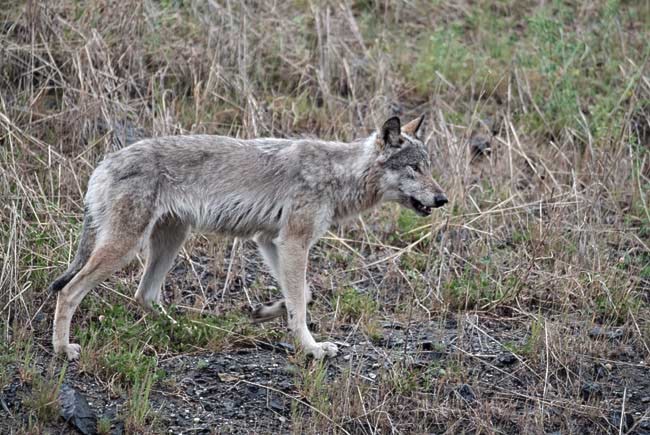Expect a noisy public debate this spring over whether the Yukon government should revive its old practice of killing or sterilizing wolves.
The territory’s wolf management plan is being reviewed at the behest of hunters, who have long blamed wolves for declining populations of moose, caribou and sheep.
The management plan was created in 1992. It was supposed to be reviewed after five years. Instead, it’s taken 18.
“A number of other management priorities have bumped that along,” said Karen Clyde, a member of the review committee, which is made up of representatives from the territorial government and the Yukon Fish and Wildlife Management Board.
The Yukon has, at various points, curbed wolf populations with poison, snares, aerial hunting and surgical sterilization. But since 2003, it’s moved away from these controversial practices and instead focused on protecting moose and caribou with other methods.
Newborn calves of the small Chisana caribou herd were protected by being kept in a fenced-in area between 2003 and 2005. But this practice is only suitable for herds smaller than 100 animals.
And in Southern Lakes, caribou numbers have rebounded thanks to a curtailed hunt. Licensed hunters have been forbidden from taking caribou since 1993, and First Nations have urged their hunters to refrain from hunting.
But several renewable resource councils have told the wildlife management board that they’d like the territory to revisit wolf control. Their members fault wolves for taking large numbers of big game, leaving less for hunters.
Government agents poisoned wolves with strychnine from the 1920s until 1983. But this practice also inadvertently led to the poisoning of other animals, particularly wolverines.
From 1983 until 1997, Yukon government officials shot wolves from helicopter. This method has been criticized for being both unsporting and inhumane, because of the difficulty of making a clean shot from the air. But Alaskan authorities still hunt wolves from aircraft today.
The Yukon abandoned aerial hunting in favour of surgical sterilization. But this program, pursued from the 1990s until 2003, had limited success and proved pricey.
Culling wolves was also an ancient practice by Yukon First Nations hunters, who would crawl into dens in the spring and kill all but a few pups to limit populations.
The Yukon has a healthy wolf population of between 4,000 to 4,500 animals, according to the Environment department. A survey of the Southern Lakes wolf population was last conducted in 2009. About 130 wolves are harvested by hunters and trappers each year.
Resident licensed hunters are currently able to take seven wolves annually. Non-resident licensed hunters are able to take two wolves annually. There’s no limit to how many wolves trappers may take.
Besides reviewing the plan, the committee is comparing how neighbouring jurisdictions control wolf populations. This information is expected to be ready by January.
In the spring, public meetings are planned in Whitehorse, Haines Junction, Watson Lake, Dawson City, Old Crow, Carmacks, Mayo, Ross River and Teslin. The review committee aims to have a report ready by July.
Contact John Thompson at
johnt@yukon-news.com.
